
THEORETICAL CHEMISTRY ACCOUNTS
Scope & Guideline
Pioneering Research in Theoretical and Computational Chemistry
Introduction
Aims and Scopes
- Computational Chemistry Methods:
The journal emphasizes the development and application of computational methods such as Density Functional Theory (DFT), ab initio calculations, and molecular dynamics simulations to investigate chemical systems. - Material Science and Nanotechnology:
Research on the electronic, optical, and structural properties of nanomaterials and their applications in various fields, including energy storage, catalysis, and environmental science. - Chemical Reactions and Mechanisms:
Studies focusing on the theoretical elucidation of reaction mechanisms, including kinetic studies, energetic profiles, and selectivity of chemical reactions. - Machine Learning and Quantum Chemistry:
Integration of machine learning techniques with quantum chemistry to enhance predictive capabilities and optimize computational methods. - Intermolecular Interactions and Complexes:
Investigations into non-covalent interactions, hydrogen bonding, and complex formation, emphasizing their roles in biological, chemical, and material systems. - Spectroscopy and Dynamics:
Theoretical studies that link computational results to spectroscopic properties, including vibrational, electronic, and photophysical characteristics.
Trending and Emerging
- Machine Learning Applications in Chemistry:
Recent publications emphasize the application of machine learning techniques to predict chemical properties, optimize molecular structures, and enhance computational efficiency, indicating a significant trend towards data-driven methodologies. - Nanomaterials and Energy Applications:
There is an increasing focus on the study of nanomaterials, particularly in relation to energy applications such as batteries, catalysis, and environmental remediation, showcasing the journal's commitment to addressing contemporary technological challenges. - Quantum Computing and High-Performance Computing:
The exploration of quantum computing methods and their implications for theoretical chemistry is gaining traction, reflecting the field's move towards leveraging advanced computational capabilities. - Theoretical Studies on Drug Design and Biochemistry:
Emerging themes include the application of theoretical methods in drug discovery and biochemical systems, highlighting the journal's engagement with health-related research areas. - Interdisciplinary Approaches:
There is a notable trend towards interdisciplinary research that combines theoretical chemistry with physics, materials science, and biology, reflecting a broader perspective in tackling complex scientific problems.
Declining or Waning
- Traditional Organic Reaction Mechanisms:
There has been a noticeable decline in studies solely focused on traditional organic reaction mechanisms without the incorporation of modern computational techniques or interdisciplinary approaches. - Basic Thermodynamic Studies:
Research that purely addresses fundamental thermodynamic properties without a direct application or advanced theoretical framework appears to be waning, as the journal shifts towards more applied and complex theoretical studies. - Classical Molecular Dynamics without Quantum Corrections:
The use of classical molecular dynamics simulations in isolation, without integrating quantum mechanical insights or hybrid methodologies, is becoming less common. - Static Theoretical Models:
The reliance on static theoretical models that do not account for dynamic effects or real-time simulations is declining, as the field increasingly values dynamic and time-dependent analyses.
Similar Journals
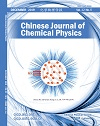
CHINESE JOURNAL OF CHEMICAL PHYSICS
Pioneering Research in Chemical Physics InnovationChinese Journal of Chemical Physics, published by the Chinese Physical Society, serves as a pivotal platform for advancing the field of chemical physics, encompassing groundbreaking research and innovative methodologies since its inception in 2000. With an ISSN of 1674-0068 and E-ISSN of 2327-2244, the journal has established itself within the academic community, reflected in its 2023 classification as Q3 in Physical and Theoretical Chemistry and a Scopus rank of #142 out of 189, representing the 25th percentile in this competitive field. Although it does not currently operate as an open-access publication, its commitment to disseminating pivotal scientific research continues to attract scholars and professionals alike. The journal aims to bridge the gap between theoretical principles and practical applications in chemical physics, thereby fostering collaboration and innovation. By contributing significantly to the discourse in this dynamic domain, the Chinese Journal of Chemical Physics remains an essential resource for researchers, professionals, and students eager to stay abreast of contemporary developments.

CHEMICAL PHYSICS LETTERS
Fostering Collaboration in the World of Chemical PhysicsCHEMICAL PHYSICS LETTERS, published by Elsevier, is a prestigious journal that has been at the forefront of advancing knowledge in the fields of physical and theoretical chemistry and physics since its inception in 1967. With an impressive impact factor reflective of its high-quality research output, this journal holds Q2 quartile rankings in both the Physical and Theoretical Chemistry and Physics and Astronomy categories for 2023. It is recognized as a key platform for disseminating groundbreaking findings, with Scopus rankings placing it within the top 76th and 66th percentiles in its respective categories. Researchers and professionals benefit from its insightful contributions and rigorous peer-review process, making it an essential resource for those engaged in cutting-edge chemical physics studies. Although the journal is not open access, it remains accessible through various institutional subscriptions, ensuring that a wide audience can explore its wealth of knowledge. Located in Amsterdam, Netherlands, the journal continues to drive innovation and collaboration across diverse scientific disciplines.
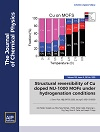
JOURNAL OF CHEMICAL PHYSICS
Charting New Territories in Physics and AstronomyJOURNAL OF CHEMICAL PHYSICS, published by AIP Publishing, stands as a premier scholarly source within the realms of physical and theoretical chemistry, as well as physics and astronomy. With an enduring history dating back to 1933 and converging until 2024, this journal has established itself as a cornerstone of the scientific community, evidenced by its prestigious Q1 categorization in multiple fields, including medicine and general physics. It is ranked 37th out of 243 in the general physics and astronomy category and holds a commendable 39th position in physical and theoretical chemistry according to Scopus rankings, highlighting its significant impact in these disciplines. Although not an open-access journal, it caters to a wide audience of researchers, professionals, and students seeking to deepen their understanding of the interactions and dynamics of chemical systems. With its expertly curated content, the JOURNAL OF CHEMICAL PHYSICS continues to play a vital role in advancing knowledge and fostering innovation across its core subjects.
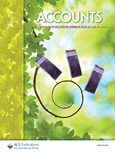
ACCOUNTS OF CHEMICAL RESEARCH
Elevating the Standards of Chemical Research and ApplicationACCOUNTS OF CHEMICAL RESEARCH, published by the American Chemical Society, is a premier journal dedicated to advancing the field of chemistry and its applications in medicine. With an impressive impact factor and recognition as a Q1 journal in both chemistry and medicine categories, it ranks among the top-tier publications, exhibiting an outstanding Scopus rank of 8 out of 408 in general chemistry, placing it in the 98th percentile. This journal has been a vital source of innovative and significant research since its inception in 1968, and it aims to provide a platform for high-quality research articles, reviews, and critical essays that bridge the gap between chemical research and clinical implications. While it is not an open-access publication, the insights available in Accounts of Chemical Research are invaluable for researchers, professionals, and students seeking to explore the latest developments and interdisciplinary approaches within the dynamic fields of chemistry and medicine.

Results in Chemistry
Unlocking Innovations in ChemistryResults in Chemistry is a prominent journal published by Elsevier, dedicated to fostering innovation and disseminating cutting-edge research in the field of chemistry. With an ISSN of 2211-7156, this open-access journal has been committed to making scientific knowledge widely available since 2019, aligning with the global trend towards accessibility in research. Based in the Netherlands, it features interdisciplinary studies that span the breadth of general chemistry, contributing significantly to the academic dialogue within the scientific community. Despite currently holding a Q3 ranking in the miscellaneous category of chemistry and occupying the 228th position out of 408 in Scopus rankings, the journal is poised for growth, aiming to enhance its impact and visibility. Researchers, professionals, and students alike will find invaluable resources and insights within its pages, making Results in Chemistry an essential platform for those looking to stay abreast of advancements and trends in chemistry research up to the year 2024.
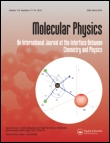
MOLECULAR PHYSICS
Unraveling the mysteries of matter at the molecular level.MOLECULAR PHYSICS, published by Taylor & Francis Ltd, is a distinguished international journal that has been advancing the fields of biophysics, condensed matter physics, molecular biology, and physical and theoretical chemistry since its inception in 1958. With an ISSN of 0026-8976 and an E-ISSN of 1362-3028, the journal provides a rich platform for the dissemination of high-quality research, evidenced by its Q3 ranking in several domains including both biophysics and condensed matter physics as of 2023. Although the journal operates on a traditional subscription model rather than an Open Access basis, its rigorous selection process ensures the publication of relevant and impactful articles. The journal's continued convergence of research until 2024 underlines its ongoing significance and adaptability in an ever-evolving scientific landscape. For researchers, professionals, and students alike, MOLECULAR PHYSICS serves as an essential resource for keeping abreast of the latest developments, fostering collaboration, and inspiring future advancements in molecular theory and applications.
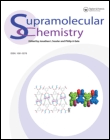
SUPRAMOLECULAR CHEMISTRY
Innovating the Future of Supramolecular ScienceSupramolecular Chemistry, published by Taylor & Francis Ltd, is a pivotal journal in the field of chemistry, showcasing innovative research that transcends traditional molecular boundaries. With an ISSN of 1061-0278 and E-ISSN of 1029-0478, this journal has been a central resource for scholars since its inception in 1992 and is set to continue its impactful contributions through 2024. Ranked in the third quartile (Q3) of miscellaneous chemistry categories and holding a commendable place at #194 out of 408 in the general chemistry rankings according to Scopus, the journal provides a platform for the dissemination of groundbreaking studies that explore the interactions and behavioral patterns of supramolecular systems. Although it does not currently offer open access, its rich content is accessed by a wide audience, fueling advancement and collaboration among researchers, professionals, and students interested in the intricate world of supramolecular science. By regularly publishing peer-reviewed articles, this journal is crucial for anyone seeking to deepen their understanding of complex chemical systems and their applications across diverse fields.

JOURNAL OF MOLECULAR GRAPHICS & MODELLING
Innovating Insights in Molecular GraphicsJOURNAL OF MOLECULAR GRAPHICS & MODELLING, published by Elsevier Science Inc, is a leading peer-reviewed journal dedicated to the fields of molecular graphics and modeling. With an ISSN of 1093-3263 and an E-ISSN of 1873-4243, this journal has established its relevance since its inception in 1997, and continues to thrive as it extends its scope into 2024. Acknowledged for its impact in the academic community, it holds a Q2 ranking in both Computer Graphics and Computer-Aided Design and Materials Chemistry, as well as a Q3 ranking in Physical and Theoretical Chemistry and Spectroscopy, reflecting its significance across multidisciplinary research domains. Notably, the journal ranks in the 73rd percentile for Computer Graphics and maintains competitive standings in Materials Science and Chemistry areas. Although it does not currently offer open access options, the journal is an essential resource for researchers, professionals, and students who are engaged in cutting-edge studies and applications in molecular graphics, computational methods, and material design. By facilitating a deeper understanding of molecular interactions through innovative graphical modeling, the journal contributes significantly to advancements in science and technology.

Journal of Physical Chemistry Letters
Advancing the Frontiers of ChemistryThe Journal of Physical Chemistry Letters, published by the American Chemical Society, is a premier journal in the fields of Physical and Theoretical Chemistry, Materials Science, and Nanoscience and Nanotechnology. Since its inception in 2010, this journal has established itself as a significant platform for rapid publications of cutting-edge research that bridges various branches of chemistry, providing a critical avenue for advancing knowledge in these dynamic fields. With an impressive impact factor and a consistent ranking in the top quartile (Q1) of its categories, the journal ranks 25th out of 189 in Physical and Theoretical Chemistry and 79th out of 463 in General Materials Science according to Scopus metrics. Although it currently does not operate under an open access model, it remains an essential resource for academics seeking to disseminate their findings to a global audience. Researchers, professionals, and students alike will find invaluable insights and contributions that push the boundaries of scientific inquiry within these disciplines.

JOURNAL OF STRUCTURAL CHEMISTRY
Bridging Innovation and Tradition in Structural ChemistryThe JOURNAL OF STRUCTURAL CHEMISTRY, published by PLEIADES PUBLISHING INC, is a premier resource in the fields of Inorganic Chemistry, Materials Chemistry, and Physical and Theoretical Chemistry. Established in 1960, this journal has been providing a platform for groundbreaking research, facilitating the advancement of knowledge and innovation up to the year 2024. With an ISSN of 0022-4766 and an E-ISSN of 1573-8779, this journal strives to maintain high academic standards, as evidenced by its quartile rankings in 2023, where it ranks Q4 across various chemistry categories. While it currently does not offer open access, the journal's insightful articles are crucial for professionals and students seeking to enhance their understanding and expertise in structural chemistry. Subscribers can expect a comprehensive collection of peer-reviewed research, empirical findings, and theoretical discussions that contribute significantly to the scientific community. With its strong historical foundation and ongoing commitment to quality, the JOURNAL OF STRUCTURAL CHEMISTRY continues to be an essential resource for those passionate about the complexities of structural chemistry.